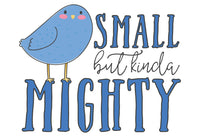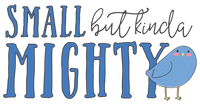Crochet tools and supplies for beginners: Hooks
This is the second post in a series about the crochet tools and supplies I recommend for beginners. The first post was about yarn and in this post I will tackle the other must-have item - hooks!
I've been teaching a lot of new crocheters lately and I've received a number of requests to share some general information that would be useful reference material for folks in the beginner stages of crochet, including, where to start?
There will be a video(s) to go along with this series and I will link to it/them when they are posted on my YouTube channel.
If you are looking to learn to crochet then I teach workshops and offer private lessons at Handknit Yarn Studio here in Hamilton. You can also book time with me directly, right here on my website.
So, you've got your yarn and now you need a hook. Which one do you get for your first project and why are there so many different types anyway?!
Size
As I stated back in my first post about yarn, my general rule of thumb for beginners is to follow the goldilocks principle. So, when you're learning to crochet I'm going to encourage you to choose a simple hook that's not too small and not too large.
You may recall that I recommended selecting a worsted or light worsted weight yarn to start. The goldilocks hook for this yarn weight is a 5mm, sometimes referred to as a size H or size 8. For your first projects, look for patterns that recommend using worsted weight yarn and a hook about 5mm in size.
A list of the standard hook sizes in use in North America can be found at the Craft Yarn Council's website. For accuracy and uniformity, I generally refer to the size of a hook in millimetres but if a pattern refers to a J hook or a size 10 hook then the CYCA table will help you work out that you need a 6mm hook.
Anatomy
There won't be a test so you don't have to remember the names of the parts of a hook! (Plus there's no consistency, I've seen the top part of the hook referred to as the head, tip, hook...)
The reason I'm introducing them here is, whatever you call them, you need to know what different parts of the hook are designed to do:
- Throat. This is the part of the hook where you 'catch' or 'grab' your yarn. The throat can look different depending on whether your hook has an inline or tapered design (see below for an explanation of the difference).
- Shaft. This is the part of the hook that corresponds to the hook's size - i.e., in this case, the circumference of the shaft is 5mm. It's important to understand that, although you grab your yarn with the throat of your hook, the throat is much narrower than the shaft. After you've pulled up a loop, you need to ensure the loop(s) on your hook are on the shaft, otherwise your stitches will be much too tight and small.
- The handle of the hook usually has a flat part at the top for your thumb to rest on, and the hook sizing information can be found at the bottom of the handle.
Ergonomic vs plain
The picture above shows a Clover Amour 5mm ergonomic crochet hook. In the picture below, to the right of that hook is a dark blue, Hiya Hiya 8mm regular hook.

Whether you use a regular or ergonomic crochet hook is entirely a matter of personal preference. Some people use ergnomic hooks because they suffer from carpal tunnel or arthritis. I usually use ergonomic hooks simply because I find crocheting with them more comfortable.
Inline vs tapered
Again, whether you choose a hook that has a tapered or an inline throat is wholly up to you. First, let's look at the difference:
- An inline hook, as the name suggests, tends not to taper. It has a much flatter throat, a deeper hook and a sharper, less rounded hook point. Beginners sometimes find that the deeper hook makes it easier to grab their yarn.
- I personally prefer the tapered design because the smoother, more rounded hook doesn't "catch" the yarn, causing splitting.
In the U.S., the most common brand of tapered hook is Boye and the most common inline hook is Susan Bates, so you will sometimes see these referred to as Boye vs Bates hooks.
I can crochet with both designs but if, for example, you're having trouble grabbing your yarn with a tapered hook, then it may be worth giving an inline design a try.
Material
Most hooks are made from aluminium but plastic, wood, bamboo and other materials are also common. As the hooks get bigger (the largest one in the picture above is 15mm) they tend to be made entirely of either plastic or bamboo as other materials produce a hook that is too heavy.
Non-standard crochet hooks
There are other types of hooks for specialized crochet work:
- Steel hooks. These hooks are much smaller than regular hooks and are designed to be used with crochet thread.
- Tunisian crochet hooks and knooks. Unlike knitting, in regular crochet, only one stitch is active at a time. In both Tunisian crochet and knooking, more than one stitch is active. This requires longer hooks, that are sometimes lengthened further with cables.
- Polymer clay, ergonomic artisan hooks. The Queen Bee hook in the picture above is an example. The artist uses a regular crochet hook and creates a unique, ergonomic handle for the hook, using polymer clay. I got this one from the FoxJamBoutique Etsy store.
Where to buy
As with yarn, I recommend beginners get their first hooks at their local yarn store (LYS). Here's why:
- you're supporting a local small business
- the folks who work at your LYS may be crocheters themselves and can recommend a hook in line with your preferences.
- as so much about getting the 'right' hook for you is about comfort, buying in person lets you hold and try different hooks to see which you prefer.
My go-to LYS is Handknit Yarn Studio (disclosure, I teach crochet workshops there) If you're in the Hamilton area I highly recommend their bricks and mortar store. Handknit stocks Knitter's Pride Waves ergonomic hooks, and ChiaoGoo bamboo hooks.
My favourite hooks, so far, are either the Clover Amour or Clover Soft Touch. I bought my 10 hook set from Amazon.
If you want to purchase any of the above hooks online from Lovecrafts or Amazon, then if you click on the link I will receive a small commission, at no extra cost to you.





Leave a comment